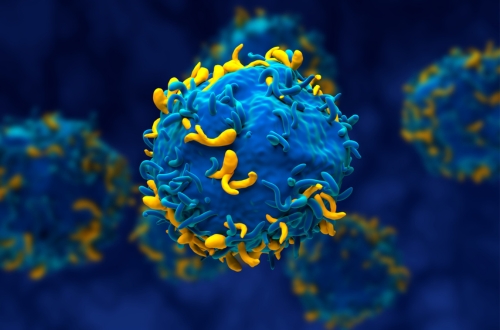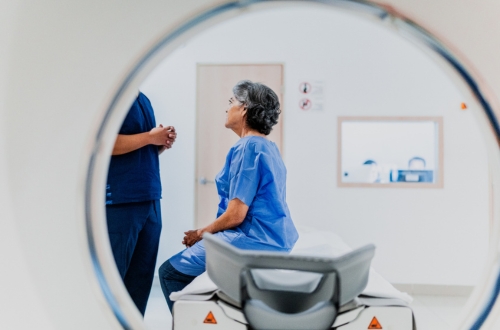Understanding Skin Cancer: Insights from Oncology CRO Experts
Skin cancer is the most common form of cancer in the United States (U.S.) and ranked 17th globally as of 2020, posing a significant public health challenge. It can be classified as either melanoma, the most lethal form, or non-melanoma subtypes, such as basal cell carcinoma (BCC) or squamous cell carcinoma (SCC). In the U.S., this cancer type affects over 3 million individuals each year, or one in five Americans, according to the American Academy of Dermatology Association. However, determining its true national and global incidence is challenging, considering non-melanoma skin cancer is often excluded from the reporting of cancer statistics. Regardless, even non-lethal forms of skin cancer pose a significant burden on the U.S. healthcare system, with a 2022 report suggesting that nearly 6.1 million Americans are treated for BCC and SCC annually at a cost of about US$8.9 billion. These figures underscore the urgent need in cancer research for a deeper understanding of the disease and highlight the valuable role of dermatology and oncology CRO (contract research organization) experts in supporting advancements in skin cancer treatment and prevention.
In this article, TFS HealthScience CRO offers insights from expert dermatology and oncology CRO leaders, delving into the pathophysiology of skin cancer, its key risk factors, and the critical importance of prevention with this cancer type. Read on to learn more!
What is Skin Cancer?
Skin cancer is characterized by the abnormal growth of cells in the epidermis, the outermost layer of the skin. This unusual cell proliferation is typically triggered by unrepaired DNA damage that leads to genetic mutations. As a result of the DNA being damaged, skin cells multiply at an accelerated rate, eventually forming malignant tumors classified as skin cancer. The four primary types include BCC, SCC, melanoma, and Merkel cell carcinoma (MCC). Each of these types of skin cancer is unique, with varying degrees of severity, as summarized in Table 1.
Table 1. Summary of the primary subtypes of skin cancer.
| Subtype | Description | Incidence | Severity |
| BCC | Abnormal, uncontrolled growths that arise from the skin’s basal cells in the outermost layer of skin. | The most common form of skin cancer: Approximately 3.6 million cases are diagnosed in the U.S. each year. | BCCs can be locally destructive if not detected and treated early.
Occasionally, these cancers metastasize (spread), and in very rare instances, they can be fatal. |
| SCC | An uncontrolled growth of abnormal cells arising from the squamous cells in the outermost layer of skin. | The second most common form of skin cancer: An estimated 1.8 million cases are diagnosed each year in the U.S. | SCCs can sometimes grow rapidly and metastasize if not detected and treated early. |
| Melanoma | A cancer that develops from melanocytes, the skin cells that produce melanin pigment, which gives skin its color. | In 2023, an estimated 186,680 new cases of melanoma were expected to occur in the U.S., with the majority expected to be invasive. | Melanoma is the most dangerous of the three most common forms of skin cancer. Melanomas can be curable when caught and treated early. |
| MCC | A rare, aggressive skin cancer. | About 3,000 new cases of MCC and about 700 deaths from it occur in the U.S. each year, and that is expected to rise. | MCCs are at high risk of recurring and metastasizing throughout the body, so early detection and treatment are crucial. |
Abbreviations: BCC, basal cell carcinoma; MCC, Merkel cell carcinoma; SCC, squamous cell carcinoma; U.S., United States.
Source: Skin Cancer Foundation.
The Role of Genetics in Skin Cancer
The leading causes of skin cancer are the harmful ultraviolet (UV) rays from the sun and the use of UV tanning beds. Exposure to these sources of UV radiation can cause significant damage to the DNA within skin cells, contributing to the development of skin cancer. Similarly, genetics also plays a significant role in determining a patient’s susceptibility to skin cancer. That is, some individuals may inherit mutated genes that increase their risk of developing the disease. For example, mutations in the melanocortin 1 receptor (MC1R) gene make these individuals more vulnerable to UV damage, creating a higher risk of early-onset melanoma and non-melanoma skin cancer, even without excessive UV exposure. Several genetic mutations and hereditary disorders are also linked to an increased risk of BCC (basal cell nevus syndrome) and SCC (oculocutaneous albinism, and epidermolysis bullosa).
The Importance of Early Detection in Skin Cancer
Fortunately, when detected early, skin cancer is highly treatable; even for melanoma, the five-year survival rate in patients is 99% when diagnosed early. Dermatologists can often treat this cancer type non-invasively with minimal scarring and a high likelihood of complete elimination. In some cases, patients may present with growth at a precancerous stage before it has fully developed into skin cancer or penetrated beneath the skin’s surface. Therefore, early detection and treatment are crucial for preventing disease progression and improving patient outcomes. Given how common this cancer type is in the U.S., there is a critical need for increased awareness, regular skin checks, and protective measures against UV radiation to prevent skin cancer.
Insights from an Oncology CRO Expert
As a leader within the cancer research and clinical trials industry, TFS HealthScience’s Oncology & Hematology business unit makes up nearly a third of all studies conducted by the company. Under the remarkable leadership of Dr. Bin Pan (Ph.D.), the leading oncology CRO expert at TFS, boasts a track record of conducting over 300 cancer research trials for more than 35 clients, including over 2000 patients and 8000 sites across 17 countries. As the Executive Director, Program Strategy, Oncology & Hematology at TFS, Dr. Pan possesses more than 20 years’ experience in all phases of oncology clinical development programs, as well as expertise in adoptive cellular therapies, targeted small molecules, immuno-oncology clinical development across solid tumors and hematological malignancies.
Dr. Pan recently shared her insights into the current understanding of skin cancer!
Q1: How does skin cancer typically present itself in patients? Are there any warning signs people should be aware of?
A: The most common sign of skin cancer is a sudden change in the look of your skin, including a new growth, a persisting sore, or a change in an old growth. For serious types of skin cancer like melanoma, patients should note the following warning signs in growths or moles, as recommended by the Centers for Disease Control and Prevention (CDC):
- Is the growth asymmetrical?
- Does it have irregular or jagged borders?
- Is the color uneven?
- Is the diameter larger than a pea?
- Has the growth changed in recent weeks or months?
Q2: Are you aware of any promising new therapies or approaches being developed for treating skin cancer?
A: Checkpoint inhibitors are an emerging class of immunotherapy that are proving vital in fighting melanomas. Most recently, the U.S. Food and Drug Administration (FDA) approved a tumor-infiltrating lymphocyte (TIL) treatment named Amtagvi (lifileucel) for use against metastatic melanoma in February 2024. This therapy harnesses a patient’s own cancer-fighting T-cells to shrink tumors and prolong life.
Q3: What are the top 5 preventative measures for skin cancer?
A: Skin cancer is highly preventable with a few easy prevention strategies. The five most important include the following:
- Avoid the midday sun between 10 a.m. and 4 p.m. (EST).
- When outdoors, stay in the shade as much as possible.
- Wear clothing that covers your arms and legs, as well as a wide-brimmed hat and sunglasses that block UVA and UVB rays.
- Use sunscreen with a sun protection factor (SPF) of 15 or higher and reapply regularly.
- Avoid tanning beds.
Q4: How important is early detection in improving outcomes for skin cancer patients, and what advice would you give to individuals for early detection?
A: Checking your skin for moles regularly will help you find any suspicious changes. Be sure to check less visible areas of your skin, like the soles of your feet, and promptly tell your doctor about any unusual moles or changes in your skin. You can also speak with your doctor or dermatologist to find out if you are at increased risk of skin cancer.
Q5: What role do clinical trials play in advancing our understanding and treatment of skin cancer, and how can patients potentially benefit from participating in them?
A: Clinical trials are an indispensable part of bringing new treatments to the market, especially in the field of cancer research. They not only provide an opportunity for patients who participate to gain early access to potentially effective new treatments, but also contribute to the advancement in science and medicine, ultimately benefiting other patients and society as a whole.
Q6: Are there any misconceptions about skin cancer that you commonly encounter in your practice that you would like to address?
A: There are several misconceptions commonly circulated about skin cancer that many patients may not know are false, including the following five.
- I am not at risk of getting skin cancer because my routine doesn’t include any outdoor activities.
Brief sun exposure throughout the year can cause significant damage, particularly to people with fair skin, and is linked to developing SCC. - People who typically tan easily and rarely burn will not get cancer.
Any change in your natural skin color is a sign of skin damage, and therefore, presents an increased risk of developing skin cancer. - You don’t need to wear sunscreen on a cloudy day.
Even on a cloudy day, harmful UV rays can reach your skin and eyes, causing long-term damage. Therefore, it is still recommended that you use sunscreen. - Teenagers and young people don’t have to worry about skin cancer. It only affects older adults.
Anyone can develop skin cancer. For this reason, you should conduct monthly self-exams and attend annual skin cancer screenings with a board-certified dermatologist. - As long as you apply your sunscreen every day, it doesn’t matter what you’re doing or how much you put on.
The heat from your activity and surroundings can increase the sensitivity of your skin, resulting in the protective effects of sunscreen wearing off after time. Therefore, sunscreen must be reapplied at least every two hours using the recommended amounts (one tablespoon for your face and one ounce for the rest of your body).
Insights from a Dermatology CRO Expert
Because skin cancer encompasses both the realms of oncology and dermatology clinical research, input from dermatology CRO experts is also valuable for expanding our understanding of the disease. TFS offers a dedicated dermatology unit that covers a variety of DIIDs (Dermatology, Immunology, & Inflammatory Diseases), including skin cancer. The TFS DIID business unit has conducted nearly 250 dermatology studies across over 20 countries, demonstrating the company’s history of success with navigating Phase I-IV clinical trials with efficiency. Their team has achieved these impressive milestones under the successful leadership of Ina Zschocke (Ph.D.), Vice President, Head of DIID at TFS. With her background as the co-founder and managing partner of SCIderm, a leading dermatology CRO, Ina has over 20 years of experience in all operational aspects of dermatology clinical trials, including clinical operations, biostatistics, project management, and business development.
Dr. Zschocke offered her insights into skin cancer for TFS, emphasizing the importance of regularly conducting self-examined skin checks, in addition to consulting a dermatologist upon noticing new or changing growths. She acknowledged the rapidly changing landscape of skin cancer therapy and highlighted the promise of photodynamic therapy in particular. This promising form of therapy uses light (from a laser or LEDs) and photosensitizing agents to kill both cancerous and precancerous cells. These emerging therapies and recent advancements in our understanding of skin cancer are made possible by cancer research and clinical trials, which she also noted provide an opportunity for patients to become empowered by being actively involved in their treatment decisions and care.
To end off, Dr. Zschocke debunked a common myth that skin cancer is not as serious as other forms of cancer. She states that, although it is highly treatable with minimally invasive approaches when caught early, certain types, like melanoma, can be especially aggressive and potentially life-threatening if left untreated. For this reason, skin cancer must be taken seriously by prioritizing steps toward prevention and early detection.
Conclusion
In conclusion, skin cancer presents a significant health challenge globally, with a particularly high incidence in the United States. Understanding this disease, its primary types, and key contributors, including genetic predispositions and harmful UV exposure, is crucial for early detection and effective treatment in patients. Dermatology and oncology CRO experts like Ina Zschocke (Ph.D.) and Bin Pan (Ph.D.) recognize the growing burden of skin cancer and are helping CROs like TFS play a pivotal role in advancing cancer research in this field.
TFS Oncology CRO for Your Cancer Research Needs
TFS HealthScience’s Oncology and Hematology services are dedicated to providing comprehensive support for your clinical trials, whether they’re local or global. With a proven track record of over 300 cancer research trials across all phases, we’re committed to delivering solutions that match your needs. Our global operations teams are specialized in skin cancer research, offering rigorous operational oversight and adherence to global standards under the strong leadership of Bin Pan (Ph.D.), Executive Director, Head of Oncology & Hematology at TFS.
Ready to learn more from our oncology cro experts?
Visit our website to learn more about our oncology cro services, or connect with a TFS representative here!
Connect with Us
Contact us today to discover how TFS can be your strategic CRO partner in clinical development.



